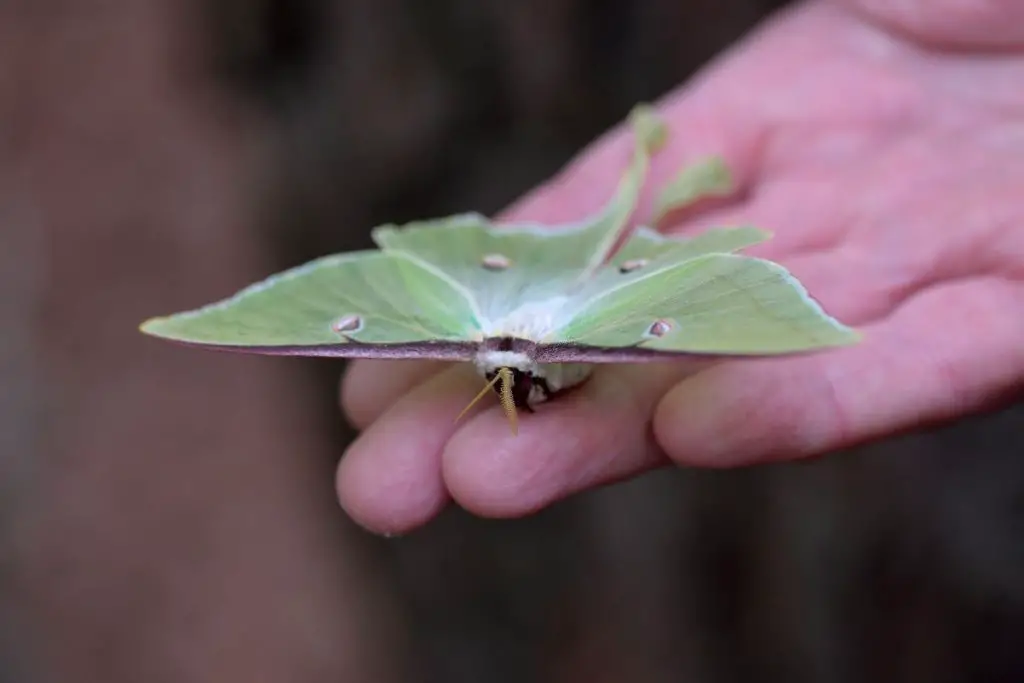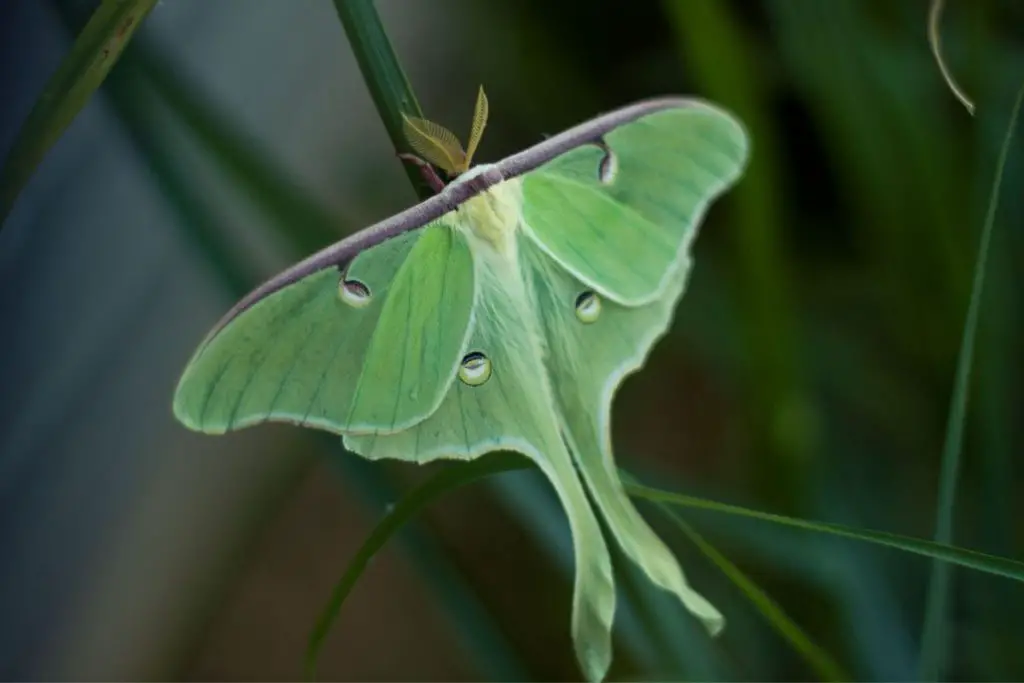The Luna moth “Actias luna” also known as the “American moon moth” is, in fact, a Nearctic moth from the family Saturniidae, subfamily Saturniinae, a group species commonly known as the giant silk moth.
To some, the Luna Moth is also considered to be one of the most spiritual and mystical of spirit guides! And seeing one can be extremely rare, especially at the adult stage since they only live for approximately one week.
However, because of their rarity does this mean that luna moths are endangered?
The current status of the Luna Moth has not been assessed by the IUCN Red List, however, it’s believed that Luna moths are not threatened with extinction as of yet.
Generally speaking, the populations of Luna Moths appear to be stable and they can still be found in their natural habitats if you know where to look!
Although Luna Moths are not considered to be endangered, there are still some threats that can impact their population which we are going to cover in this article.
Quick Overview
The Luna Moth is an eye-catching species with its vibrant green color and two long tails at the bottom of their hind wings. They can be found across North America, from the Great Plains to southern Canada and parts of Mexico.
Luna moths have a wingspan of up to 114 mm (4.5 in), but can exceed 178 mm (7.0 in), making them one of the largest moths in North America.
They also have one generation per year, with winged adults typically appearing around late May or early June.
However, in the southern parts of the United States luna moths will have two or even three generations per year, which will start a couple of months earlier, usually at the beginning of March!
Females can lay between 200 – 400 eggs, which are laid individually or in small clusters! These eggs are laid on the underside of tree leaves that are preferred by the larvae.

When in the larvae stage, they take on a reddish-brown color just before cocooning, and they also have a very interesting defense mechanism, to warn off predators, they do this by emitting clicks as a warning!
These moths are mainly nocturnal which means they are most active at night and can be found gripping onto wood surfaces such as tree trunks. However, during the day, luna moths typically hide away and rest in dark crevices such as tree trunks or branches.
Related Article:
Threats That Can Impact Their Population
Despite being abundant and not considered endangered, Luna moths are still facing some threats due to natural occurrences and human activities which could impact their population size in the future.
Unfortunately, like many other insects and species worldwide, Luna moths have been facing numerous threats to their survival. These can include:
- Habitat destruction from deforestation
- Urbanization, agricultural development
- Chemicals, pesticides used in agricultural areas
- Invasions of non-native species
- Climate change
- Light pollution
These threats can be particularly damaging as they can significantly reduce the overall population size of Luna Moths. And now with climate change on the rise luna moth have a new threat of “non-native species”.
In fact, as temperatures rise, our ecosystems are feeling the effects. One way this manifests is in the migration of non-native species to areas they would not normally inhabit due to climate change.
How Many Luna Moths Are Left In The World?
The exact number of Luna Moths left in the world is unknown, as their population size has not been accurately estimated making it difficult to determine exactly how many Luna Moths are remaining in the wild.
It’s safe to say that the populations are stable, at the moment, however, as already mentioned, with the incress in climate change and usage of chemicals, this could have an effect on the population size in the future.

How Rare Is It To See A Luna Moth?
Seeing a luna moth can be such a magical experience! But they’re also quite rare to see, mainly because luna moths are nocturnal insects! So the odds of seeing one during the day are low, it’s much more likely that you will see and even catch one if you venture out at night.
As Luna Moths are mainly found in rural areas, away from large cities and towns, your chances of seeing one increase if you live outside an urban area. Your best bet is to go out with a flashlight and look for them on tree trunks or set up an overnight camera to catch them in action.
The Future Of Luna Moths
The future of Luna Moths is uncertain due to a variety of environmental and human-made threats. Climate change, habitat loss, and the use of insecticide can all contribute to luna moth population declines.
As temperatures warm, collections throughout much of their habitat may become too hot for them to survive in.
Furthermore, deforestation limits the number of host trees where these moths can lay their eggs with an ever-shrinking food source, it will become more difficult for them to survive.
Additionally, increasing use of chemical fertilizers and insecticides can also directly affect an entire species’ ability to thrive – which could lead to declines in the luna moth population in certain areas.
Tips For Finding And Identifying A Luna Moth
If you live in an area where luna moths are present and would like to find and identify a luna moth then here are a few tips to help increase your chances.
- Look for them during the night: as previously mentioned, Luna Moths are nocturnal insects so the odds of seeing one during the day are low.
- Search near rural areas or wooded areas away from cities and towns: these moths require a specific habitat in order to survive so it’s best to look for them outside of urban locations.
- Use a flashlight or overnight camera: using a flashlight at night can help you spot these beautiful moths if they’re nearby. Alternatively, setting up an overnight camera with a motion detector can also help you identify them.
- Look for their distinctive features: Luna Moths have distinct yellow and green wings and eyespots on both forewings and hind wings. Also, look for a long slightly twisted tails extending from the back edge of their hindwings. If you see all these features chances are your looking at a luna moth!
With the right tools and knowledge, identifying luna moths in your area can be an exciting way to learn more about these fascinating creatures! Just don’t forget to check those tree trunks!
Conclusion
So unfortunately there’s just not enough information about the populations of luna moths! Because of this, it’s very difficult to determine whether they are truly endangered or not. However, we do know that they still exist across many parts of North America.
